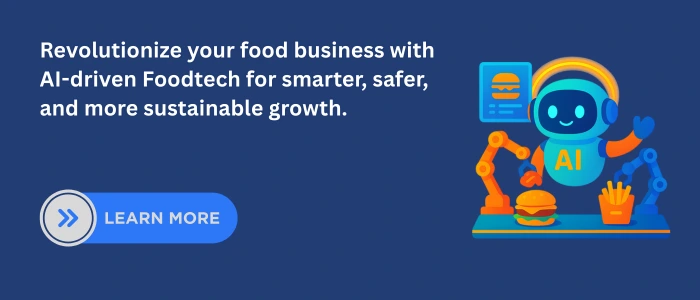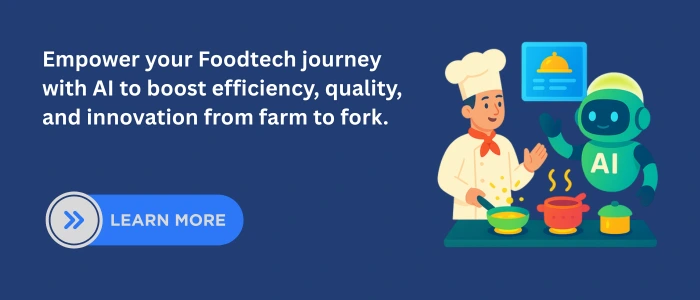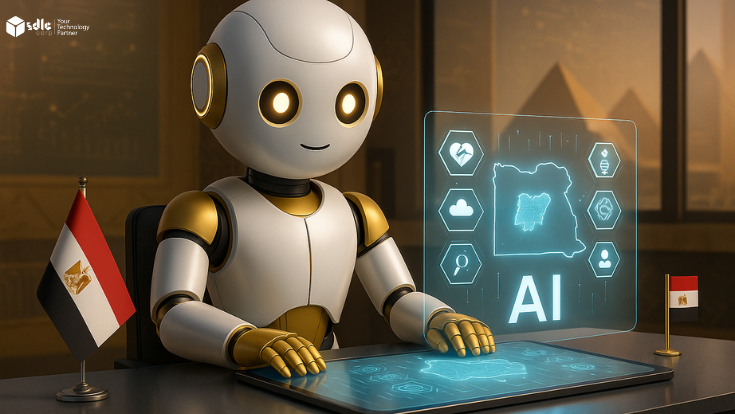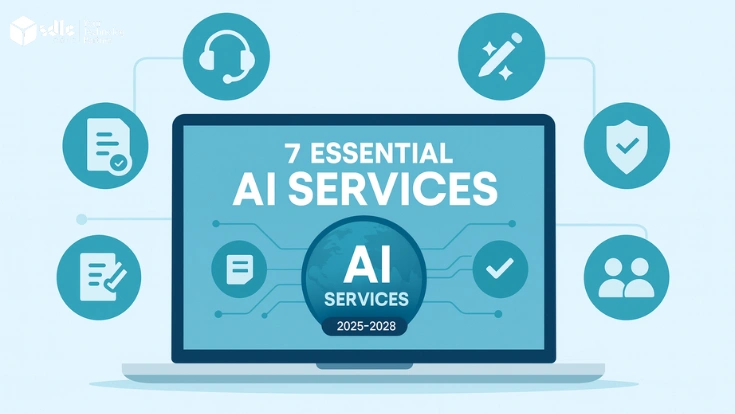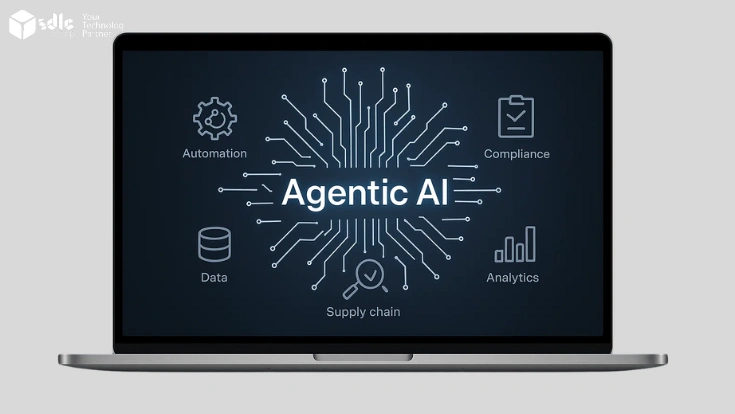Introduction
The global FoodTech industry is undergoing a rapid transformation, driven by the integration of artificial intelligence (AI) into every layer of the value chain. FoodTech refers to the use of innovative technologies to enhance food production, distribution, quality assurance, and consumer experiences. With the rise of AI development services and custom AI solutions, startups and enterprises are redefining how food is cultivated, processed, packaged, and delivered at scale.
Entrepreneurs and investors must understand the impact of AI for FoodTech, as it reshapes market competition and unlocks new revenue streams. From predictive demand forecasting to personalized nutrition platforms, AI is accelerating innovation across the food ecosystem. Industry reports indicate that the adoption of AI for FoodTech is increasing at double-digit growth rates, signaling a promising future where advanced algorithms drive efficiency, sustainability, and profitability.
1. The Evolution of FoodTech with AI
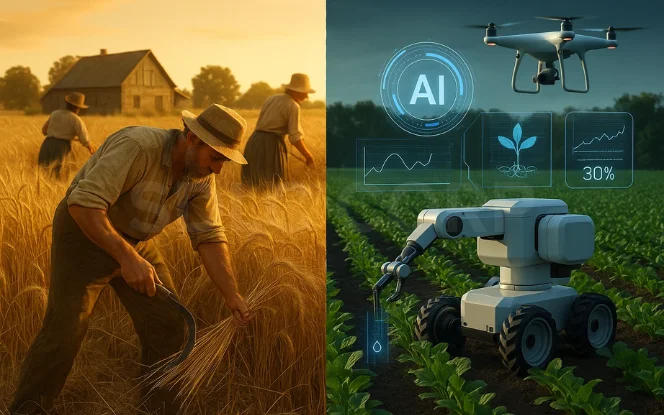
Food systems have evolved from manual processes to digitally optimized ecosystems. Historically, the sector relied on traditional farming, fragmented supply chains, and reactive food safety checks. Gradually, automation improved production, but challenges in scalability, traceability, and personalization persisted. These limitations opened the door for digital disruption, where AI for FoodTech emerged as a transformational force.
Historical Context and Digital Disruption
- Traditional food production depended on human labor, seasonal cycles, and local trade.
- Industrial mechanization introduced automation but could not address food waste or global demand.
- The rise of AI for FoodTech integrates data-driven decisions, predictive analytics, and automation across every stage of the value chain.
Role of AI for FoodTech in Bridging Gaps
Today, AI for FoodTech acts as a bridge between outdated systems and modern expectations. Its applications extend across multiple domains:
- Scalability – AI algorithms forecast consumer demand and optimize production schedules.
- Safety – Real-time monitoring with AI ensures compliance with global food standards.
- Personalization – Machine learning creates individualized meal plans and nutrition advice.
- Efficiency – Predictive logistics reduce food spoilage and minimize operational costs.
Why 2025 is a Pivotal Year
The adoption of AI for FoodTech is accelerating due to multiple converging trends:
- Technological Maturity – Affordable cloud computing and IoT integration lower barriers to entry.
- Regulatory Support – Evolving frameworks promote ethical and transparent AI practices.
- Market Growth – Investor funding in AI-driven FoodTech startups is expanding at double-digit rates.
- Consumer Expectations – Demand for sustainable, personalized, and convenient food solutions continues to rise.
Thus, 2025 stands as a landmark year where AI transitions from being an innovation to a necessity for FoodTech enterprises. Entrepreneurs who leverage AI for FoodTech gain competitive advantage, sustainability alignment, and market trust.
Learn More : Generative AI for Foodtech
2. Key Applications of AI for FoodTech
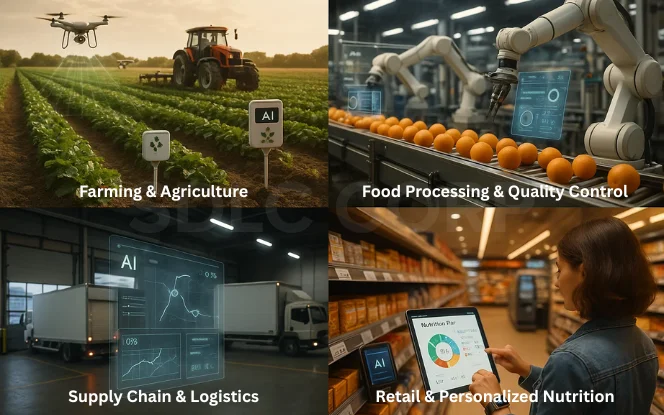
The growing adoption of AI for FoodTech is transforming farming, processing, logistics, retail, and nutrition. With machine learning, predictive analytics, and computer vision, the food ecosystem becomes smarter, safer, and more consumer-centric. Each application highlights how technology bridges gaps in efficiency, sustainability, and personalization.
AI in Farming & Agriculture
Agriculture remains the backbone of the food industry, and the use of AI for FoodTech is redefining its possibilities. Precision farming and crop intelligence ensure resource efficiency while improving yields.
- Precision Farming: AI sensors analyze soil quality, optimize irrigation, and reduce resource waste.
- Crop Monitoring: Computer vision detects pests, nutrient deficiencies, and diseases in real time.
- Yield Prediction: Predictive analytics estimate output by integrating weather patterns and soil data.
AI also extends to livestock farming, where technology improves animal welfare and productivity.
- Livestock Health Monitoring: AI sensors track animal movements, identify illness early, and guide nutrition.
- Smart Disease Detection: Algorithms forecast potential outbreaks and help farmers act quickly.
Entrepreneurial Opportunities :
- Startups can launch farm-to-cloud platforms for real-time agricultural insights.
- Investors gain returns from ventures in climate-smart farming solutions and AI livestock platforms.
Explore More : AI for Agriculture
AI in Food Processing & Quality Control
Processing and quality control are crucial stages where AI for FoodTech provides safety and compliance. Automated systems reduce contamination risks and accelerate innovation.
- Computer Vision: Imaging tools detect spoilage, contamination, and packaging defects instantly.
- Predictive Analytics: AI monitors processing environments, ensuring compliance with global safety standards.
- Process Automation: Robotics enhance labeling, sorting, and packaging efficiency.
Startups and enterprises also leverage AI for new product innovations.
- Alternative Proteins: AI accelerates R&D for plant-based and lab-grown proteins.
- Ingredient Testing: Machine learning shortens testing cycles, cutting down development timelines.
Entrepreneurial Opportunities:
- Innovators can create AI-powered contamination detection systems.
- New R&D labs are emerging around AI-driven protein alternatives.
AI in Supply Chain & Logistics
The food supply chain is complex, yet AI for FoodTech enhances efficiency and reduces waste at scale. From demand forecasting to dynamic pricing, AI makes supply chains resilient and data-driven.
- Demand Forecasting: Algorithms predict consumer needs, preventing stock shortages and overproduction.
- Inventory Optimization: AI balances warehouse supply with retail demand in real time.
- Cold Chain Management: Sensors monitor perishable goods and ensure safe transport conditions.
- Smart Routing: AI leverages traffic and weather data for faster, cost-effective deliveries.
Case Examples:
- Afresh: Optimizes grocery inventory to minimize food waste.
- Wasteless: Uses AI-driven pricing to maximize sales of near-expiry products.
Entrepreneurial Opportunities:
- Developing cold chain monitoring platforms powered by AI.
- Creating dynamic pricing solutions that integrate with retail systems.
Check Out : AI for Supply Chain
AI in Food Service & Retail
Food services and retail are being reshaped with AI for FoodTech. From robotic chefs to smart shelves, AI elevates both customer experience and operational efficiency.
- Restaurant Robotics: AI-powered robots handle cooking, serving, and cleaning tasks.
- Automated Kitchens: Smart appliances manage recipes and optimize cooking processes.
- Smart Retail: AI monitors shelf stock, applies dynamic pricing, and predicts consumer behavior.
- Food Delivery: Cloud kitchens use AI to anticipate orders and design optimized delivery routes.
Entrepreneurial Opportunities:
- Launching robotic kitchens for quick-service restaurants.
- Building AI shelf monitoring systems that boost retail efficiency.
- Expanding AI-driven food delivery platforms with real-time order insights.
Read About This : AI for Retail
AI in Product Development & Personalized Nutrition
One of the most promising areas of AI for FoodTech lies in personalization and accelerated product development. AI empowers food manufacturers and health startups to design tailored solutions.
- AI-Powered Ingredient Modeling: Algorithms simulate combinations for taste, nutrition, and sustainability.
- Personalized Diet Plans: AI nutrition apps create customized diets based on genetics, lifestyle, and health goals.
- Food as Medicine: AI curates meal plans for chronic disease prevention and health improvement.
Entrepreneurial Opportunities:
- Startups can develop AI-driven diet and wellness platforms.
- Investors can support functional food development for niche health segments.
- Enterprises can combine AI with genomics to offer hyper-personalized nutrition services.
3. AI for FoodTech and Sustainability
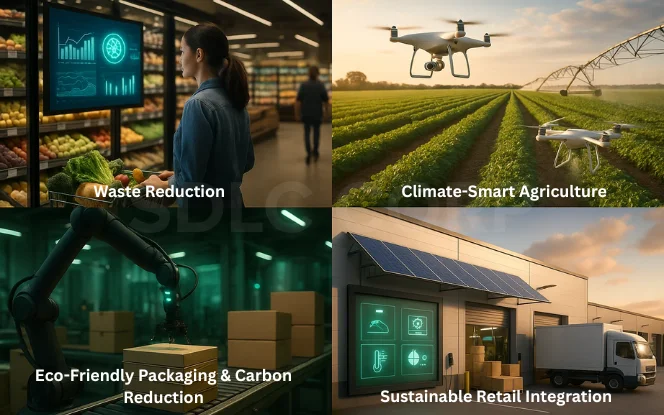
Sustainability is one of the most urgent priorities in the global food sector, and the integration of AI for FoodTech plays a central role in achieving it. From reducing food waste to promoting eco-friendly farming practices, artificial intelligence accelerates the shift toward greener, smarter food systems.
Waste Reduction
- Dynamic Pricing Models: AI adjusts food prices in real time, helping retailers sell products before expiration and cutting waste by nearly 50%.
- Smart Bins and Sensors: Data-driven waste tracking enables businesses to analyze disposal patterns and implement corrective measures.
- Predictive Demand Forecasting: Machine learning algorithms align supply with consumption trends, ensuring surplus is minimized.
Climate-Smart Agriculture
- Precision Irrigation: AI-guided water management systems optimize irrigation schedules, reducing water usage by up to 30%.
- Fertilizer Optimization: Algorithms monitor soil health and recommend precise fertilizer quantities, lowering environmental impact.
- Crop Rotation and Sustainability Mapping: Predictive tools enhance soil regeneration and biodiversity.
Eco-Friendly Packaging & Carbon Reduction
- AI for FoodTech in Packaging: Smart material modeling promotes recyclable, biodegradable, and eco-friendly packaging solutions.
- Carbon Footprint Tracking: AI-driven logistics reduce transportation emissions by optimizing delivery routes.
- Sustainable Retail Integration: Intelligent systems monitor energy usage in stores and warehouses, cutting carbon output significantly.
| Sustainability Challenge | AI for FoodTech Solution | Impact |
|---|---|---|
| Food Waste | Dynamic pricing & forecasting | Up to 50% reduction in waste |
| Water Scarcity | Precision irrigation systems | 30% less water usage |
| Carbon Emissions | AI-driven logistics optimization | Lower transportation footprint |
Final Insight
By embedding AI for FoodTech into sustainability strategies, businesses reduce waste, conserve resources, and lower emissions. This technological shift not only supports environmental goals but also delivers measurable economic benefits, making sustainability a profitable growth driver.
4 . Opportunities for FoodTech Entrepreneurs
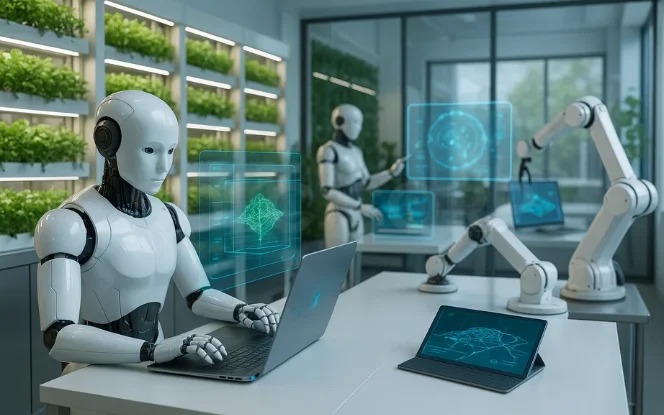
The rise of AI for FoodTech creates a wide spectrum of opportunities for entrepreneurs who aim to innovate in the global food industry. Emerging niches offer high potential for startups that align technology with critical food sector demands.
- Farm AI Software: Platforms that deliver precision farming, yield prediction, and livestock health monitoring are in demand as agriculture adopts data-first solutions.
- AI Nutrition Apps: Personalized diet and wellness applications are growing rapidly, offering consumers tailored recommendations based on lifestyle, health data, and genetics.
- Logistics Platforms: AI-powered demand forecasting, dynamic pricing, and cold-chain monitoring tools provide supply chain resilience and sustainability.
Equally important is the creation of strong data partnerships. Collaboration with farmers, food processors, retailers, and research laboratories ensures access to accurate datasets, which remain the backbone of AI model performance. Without these trusted data streams, even advanced solutions struggle to deliver reliable outcomes.
Scalability defines long-term success. Entrepreneurs leveraging AI for FoodTech must design platforms that adapt to multiple markets, regulatory environments, and cultural food preferences. By ensuring global market fit, startups not only achieve profitability but also contribute to sustainable growth and food security worldwide.
5. Why Investors are Excited About AI for FoodTech
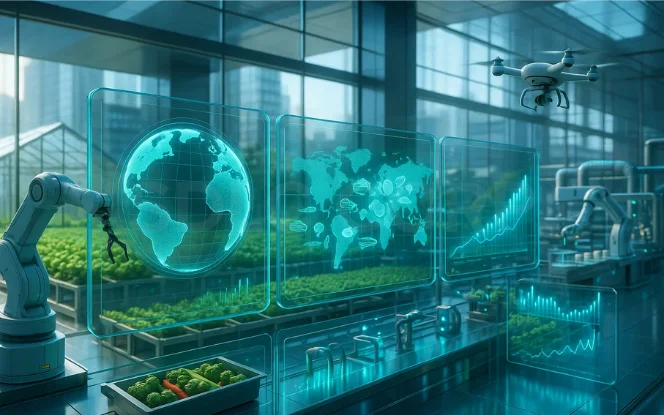
The global rise of AI for FoodTech has captured strong interest from investors because it combines scale, innovation, and sustainability. The food industry is one of the largest global markets, yet it remains full of inefficiencies ranging from waste and logistics gaps to nutrition personalization. AI-driven platforms provide solutions that not only improve profitability but also reshape long-term market growth.
- Large Addressable Market: The food sector, valued in trillions of dollars, presents vast opportunities for startups using AI for FoodTech. By addressing inefficiencies in farming, processing, and retail, AI solutions unlock multi-billion-dollar value streams.
- ESG & Sustainability Alignment: Investors are increasingly prioritizing environmental, social, and governance (ESG) goals. AI models that reduce waste, optimize resources, and support climate-smart agriculture directly align with sustainability mandates, making them highly attractive investment targets.
- Exit Opportunities: The industry has strong merger and acquisition potential, as major food corporations and retail giants actively seek to acquire AI-powered startups to strengthen their portfolios. This provides a clear path to returns through exits and partnerships.
As a result, AI for FoodTech is not only transforming operations but also creating one of the most compelling technology investment frontiers of the decade.
6. Challenges and Risks in AI Adoption
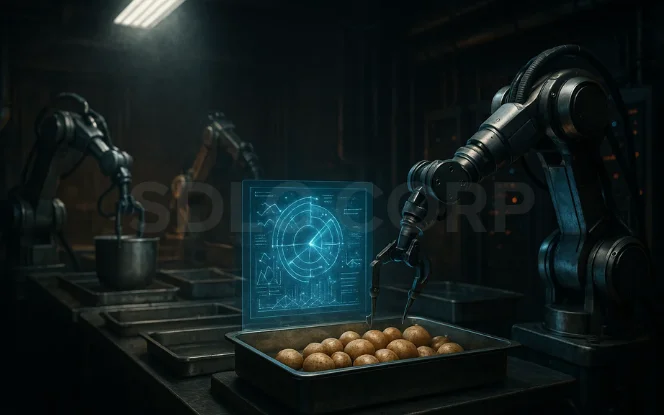
The journey of adopting AI for FoodTech comes with critical challenges that businesses must overcome. Although the benefits are substantial, barriers exist in data quality, integration, and industry acceptance.
- Data Availability and Accuracy: AI requires reliable, large-scale datasets to perform effectively. In food systems, data is often fragmented or incomplete, which limits the accuracy of predictions and automation.
- Integration with Legacy Systems: Many food enterprises continue to rely on outdated infrastructure. Embedding AI solutions into these legacy systems demands high costs, technical expertise, and significant time.
- Industry Resistance and Adoption Curve: Traditional stakeholders may be hesitant to trust AI-driven decisions, fearing disruption to established processes. Cultural resistance, coupled with a steep adoption curve, can delay widespread deployment.
For AI for FoodTech to reach its full potential, businesses must address these risks through strong partnerships, investment in infrastructure, and clear ROI-driven implementation strategies.
7. Future Outlook for AI in FoodTech
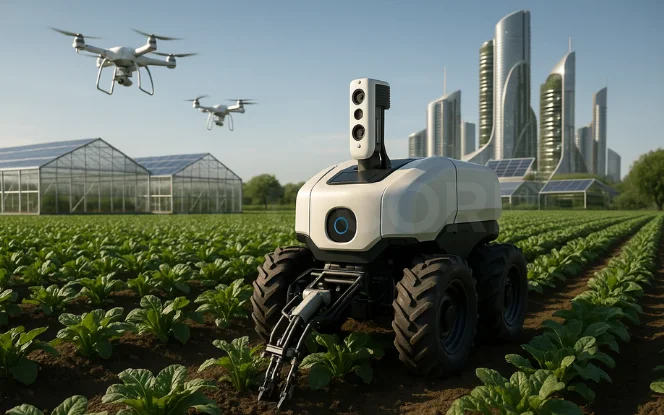
The future of AI for FoodTech promises deeper integration across the entire food value chain, driving efficiency, personalization, and sustainability. Emerging technologies will redefine how food is produced, distributed, and consumed.
- Generative AI for Recipes: Advanced models will design unique recipes tailored to individual health profiles, cultural preferences, and sustainability goals.
- Reinforcement Learning in Supply Chains: Intelligent systems will continuously adapt to disruptions, enhancing resilience and reducing waste across logistics networks.
- Hyper-Personalized Nutrition: AI apps will merge genomics, lifestyle, and health data to offer precise dietary recommendations.
By 2030, AI for FoodTech is projected to become the core driver of global food innovation. From climate-smart farming and alternative proteins to personalized health solutions, AI will shift from being a supportive tool to the central framework of food innovation. Entrepreneurs and investors who act early will define this transformation.
Conclusion
The integration of AI for FoodTech is revolutionizing every stage of the global food ecosystem, from farming and processing to logistics, retail, and nutrition. By enabling precision, sustainability, and personalization, AI is not just solving inefficiencies but reshaping the future of food. With advanced AI development services and data-driven innovation, businesses can harness custom AI solutions to transform operations and deliver smarter, more sustainable outcomes.
For entrepreneurs, it opens doors to scalable innovation, while for investors, it creates compelling opportunities in high-growth markets. The momentum is clear, and the transformation is already underway. The time to act is now—those who embrace AI for FoodTech today will define the industry of tomorrow.
FAQs
Q1. What is AI for FoodTech?
AI for FoodTech refers to the integration of artificial intelligence in the food industry to improve farming, processing, logistics, retail, and nutrition.
Q2. How is AI for FoodTech used in farming and agriculture?
AI for FoodTech enhances farming through precision irrigation, crop monitoring, yield prediction, and livestock health management, improving efficiency and sustainability.
Q3. What role does AI for FoodTech play in supply chains?
AI optimizes demand forecasting, inventory management, cold chain logistics, and smart routing, reducing waste and ensuring food safety across global supply networks.
Q4. Why are investors interested in AI for FoodTech?
Investors are excited about AI for FoodTech because it addresses inefficiencies in a trillion-dollar market, aligns with ESG goals, and offers strong exit opportunities.
Q5. What is the future outlook for AI in FoodTech?
By 2030, AI for FoodTech will drive core food innovations, including generative AI for recipes, reinforcement learning for supply chain resilience, and personalized nutrition.

